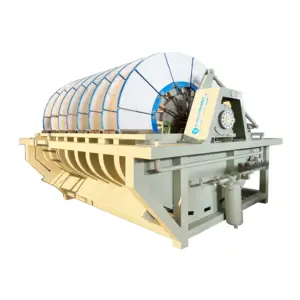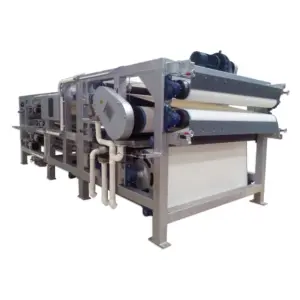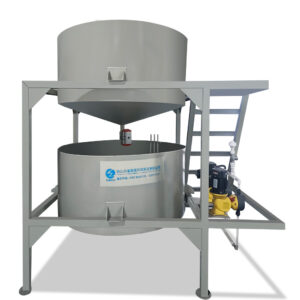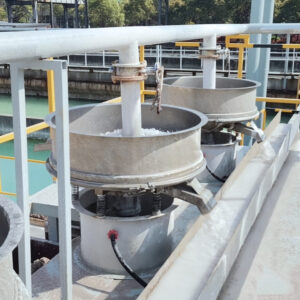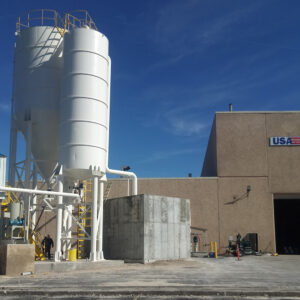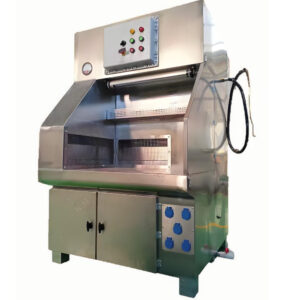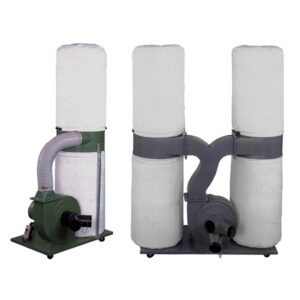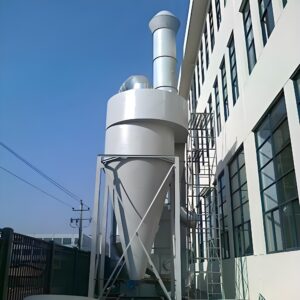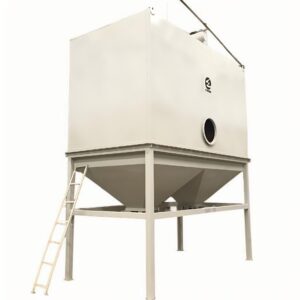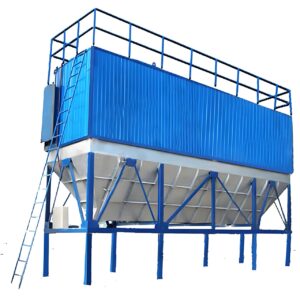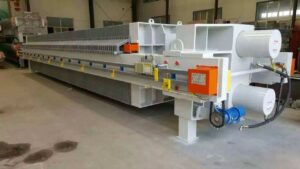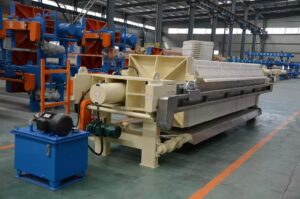Industrial facilities worldwide face mounting pressure to manage increasingly complex wastewater streams while maintaining operational efficiency and regulatory compliance. The challenge extends beyond simple treatment – it requires sophisticated high capacity wastewater systems capable of handling massive volumes while delivering consistent performance. Modern manufacturing, chemical processing, and food production facilities generate wastewater volumes that can overwhelm traditional treatment approaches, creating bottlenecks that impact entire production lines.
The consequences of inadequate wastewater management ripple through every aspect of industrial operations. Production delays, regulatory violations, and escalating disposal costs can quickly transform from operational inconveniences into business-critical threats. Environmental compliance failures not only result in substantial fines but can permanently damage corporate reputation and market position.
This comprehensive guide explores the essential elements of high-capacity wastewater treatment, examining proven technologies, implementation strategies, and real-world applications across diverse industrial sectors. We’ll analyze performance metrics, cost considerations, and emerging technologies that define successful large-scale water processing operations.
What is High Capacity Wastewater Treatment?
High capacity wastewater treatment represents a fundamental shift from conventional approaches, designed specifically for facilities processing thousands to millions of gallons daily. These systems integrate multiple treatment stages, advanced automation, and robust monitoring capabilities to handle the complex demands of industrial operations.
Defining Scale and Volume Requirements
Industrial large capacity wastewater systems typically process between 100,000 to 10 million gallons per day, though some facilities exceed even these substantial volumes. The scale distinction isn’t merely about quantity – it encompasses the complexity of contaminant removal, treatment consistency, and system reliability requirements.
According to the Water Environment Federation, facilities processing over 500,000 gallons daily require fundamentally different design approaches compared to smaller systems. The hydraulic loading, detention times, and equipment specifications must accommodate peak flow variations that can reach 200-300% of average daily volumes during production surges.
“The transition from standard to high-capacity treatment isn’t linear – it requires exponential increases in system sophistication and operational expertise,” notes Dr. Sarah Chen, Industrial Water Treatment Specialist at the Environmental Technology Institute.
| System Capacity | Daily Volume Range | Typical Applications | Key Design Considerations |
|---|---|---|---|
| Standard | 10,000-100,000 GPD | Small manufacturing | Basic treatment stages |
| High Capacity | 100,000-1M GPD | Large industrial | Advanced monitoring |
| Mega-Scale | 1M+ GPD | Petrochemical complexes | Redundant systems |
Key Components of Industrial Systems
High-capacity systems integrate multiple treatment technologies within comprehensive frameworks. Primary components include large-scale screening equipment, extended aeration basins, clarification systems, and advanced filtration arrays. Each component must operate reliably under continuous high-volume conditions while maintaining treatment efficiency.
The screening phase alone requires specialized equipment capable of handling debris loads that would quickly overwhelm residential-grade systems. Industrial screens process materials ranging from production waste to packaging fragments, requiring robust construction and automated cleaning mechanisms.
How Do Large Scale Water Processing Systems Work?
Large scale water processing operations follow sophisticated treatment sequences designed to address the unique challenges of high-volume industrial wastewater. These systems employ multiple treatment stages, each optimized for specific contaminant removal while maintaining the throughput necessary for continuous industrial operations.
Primary Treatment Processes
Primary treatment in high-capacity systems focuses on removing settleable solids and floating materials through physical separation processes. Large-scale settling tanks, often exceeding 100 feet in diameter, provide extended detention times necessary for effective solid-liquid separation at industrial volumes.
The process begins with coarse screening to remove large debris, followed by fine screening to capture smaller particles. Grit removal systems then eliminate sand, gravel, and other abrasive materials that could damage downstream equipment. These preliminary steps are crucial – inadequate primary treatment can cascade into system-wide performance issues.
In our experience with industrial installations, primary treatment efficiency directly correlates with overall system performance. Facilities achieving 85-90% suspended solids removal in primary treatment consistently demonstrate superior secondary treatment outcomes and reduced operational costs.
Advanced Treatment Technologies
Secondary and tertiary treatment stages incorporate biological processes, chemical precipitation, and advanced filtration technologies. Activated sludge systems, configured for high-volume operations, utilize extended aeration periods and sophisticated nutrient control to achieve consistent effluent quality.
Advanced oxidation processes (AOPs) have emerged as particularly effective for treating complex industrial wastewater streams. These systems utilize ozone, UV light, and hydrogen peroxide combinations to break down recalcitrant compounds that resist conventional biological treatment. Recent installations have achieved 95-98% removal efficiency for specific organic pollutants.
What Are the Benefits of High Throughput Wastewater Systems?
High throughput wastewater systems deliver substantial advantages beyond simple volume processing. These benefits encompass operational efficiency, cost optimization, and regulatory compliance – factors that directly impact industrial profitability and sustainability.
Operational Efficiency Advantages
High-capacity systems achieve economies of scale that dramatically improve operational efficiency. Automated monitoring systems continuously track performance parameters, adjusting treatment processes in real-time to maintain optimal conditions. This automation reduces labor requirements while improving treatment consistency.
Energy efficiency represents another significant advantage. Large-scale systems can justify sophisticated energy recovery technologies, including biogas capture from anaerobic digesters and heat recovery from treatment processes. A recent study by the Industrial Water Association found that facilities with high-capacity systems achieve 20-30% better energy efficiency per gallon treated compared to smaller installations.
The integration of advanced wastewater treatment technologies enables consistent performance even during production fluctuations. These systems incorporate buffer capacity and automated control systems that maintain treatment effectiveness regardless of flow variations.
Cost-Effectiveness at Scale
While initial capital investments for high-capacity systems are substantial, the long-term cost benefits are compelling. Treatment costs per gallon decrease significantly as volume increases, with facilities processing over 1 million gallons daily achieving treatment costs as low as $0.50-$0.80 per thousand gallons.
| System Scale | Treatment Cost per 1,000 Gallons | Annual Operating Cost | Payback Period |
|---|---|---|---|
| 100,000 GPD | $2.50-$3.20 | $91,000-$117,000 | 3-4 years |
| 500,000 GPD | $1.80-$2.40 | $329,000-$438,000 | 2-3 years |
| 1,000,000 GPD | $1.20-$1.60 | $438,000-$584,000 | 1.5-2 years |
However, it’s worth noting that high-capacity systems require specialized maintenance expertise and carry higher consequences for equipment failures. The complexity of these systems demands comprehensive preventive maintenance programs and skilled technical personnel.
Which Industries Need Heavy Duty Wastewater Equipment?
Heavy duty wastewater equipment serves diverse industrial sectors, each presenting unique treatment challenges and volume requirements. Understanding industry-specific needs is crucial for selecting appropriate treatment technologies and system configurations.
Manufacturing and Chemical Processing
Chemical manufacturing facilities generate some of the most challenging wastewater streams, combining high volumes with complex contaminant profiles. These facilities require specialized treatment technologies capable of handling pH variations, heavy metals, and organic compounds that would overwhelm conventional systems.
A major petrochemical complex in Texas recently implemented a comprehensive industrial wastewater treatment solution processing 2.5 million gallons daily. The system combines biological treatment, advanced oxidation, and membrane filtration to achieve discharge standards while recovering valuable process chemicals worth $200,000 annually.
Pharmaceutical manufacturing presents additional complexity with stringent regulatory requirements and trace contaminant concerns. These facilities often require multiple treatment stages, including activated carbon adsorption and reverse osmosis, to achieve required discharge standards.
Food and Beverage Production
Food processing facilities generate high-strength wastewater characterized by elevated biochemical oxygen demand (BOD) and suspended solids. Large-scale food processors, particularly meat processing plants and dairy facilities, require robust treatment systems capable of handling organic loading rates exceeding 500 mg/L BOD.
According to industry research, food processing facilities with high-capacity treatment systems achieve 30-40% better regulatory compliance rates compared to facilities with undersized systems. The consistency of treatment performance becomes critical during peak production periods when wastewater strength can double normal concentrations.
A major brewery installation demonstrates the effectiveness of properly scaled systems. Their 800,000 gallon-per-day treatment system consistently achieves 98% BOD removal while recovering biogas that provides 15% of the facility’s energy requirements.
How to Choose the Right Large Capacity Wastewater System?
Selecting appropriate large capacity wastewater systems requires comprehensive analysis of current and future treatment needs, regulatory requirements, and operational constraints. The decision process must balance technical performance with economic feasibility while ensuring long-term reliability.
Capacity Planning and Assessment
Accurate capacity planning begins with detailed wastewater characterization, including flow patterns, contaminant concentrations, and seasonal variations. Industrial facilities should plan for 25-30% above current maximum flows to accommodate future growth and operational changes.
Flow equalization becomes increasingly important at higher capacities. Systems should incorporate adequate storage capacity to handle peak discharges while maintaining consistent treatment loading. Undersized equalization can result in treatment upset conditions and regulatory violations.
“Proper capacity planning prevents the costly mistake of undersizing systems that struggle to meet performance requirements during peak operations,” emphasizes Dr. Michael Rodriguez, Senior Process Engineer at the Water Treatment Technology Center.
Technology Selection Criteria
Technology selection must consider contaminant removal requirements, discharge standards, and long-term operational costs. Biological treatment systems excel at organic removal but require careful nutrient balancing and temperature control. Physical-chemical systems provide consistent performance but generate more residual waste.
The evaluation should include lifecycle cost analysis encompassing capital costs, operating expenses, and maintenance requirements over 15-20 year periods. Systems with higher capital costs often deliver superior long-term value through reduced operating expenses and improved reliability.
What Are the Challenges in Industrial High Volume Water Treatment?
Industrial high volume water treatment presents unique challenges that require specialized solutions and operational approaches. Understanding these challenges is essential for successful system implementation and long-term performance.
Technical Limitations and Solutions
High-capacity systems face technical challenges including hydraulic overloading, treatment process stability, and equipment reliability under continuous operation. Process control becomes increasingly complex as system size increases, requiring sophisticated monitoring and automated response systems.
Biological treatment systems are particularly sensitive to shock loads and toxic inputs that can disrupt microbial populations. Advanced monitoring systems now incorporate real-time toxicity testing and automated feed controls to protect biological processes from operational upsets.
Energy consumption represents another significant challenge. High-capacity systems require substantial electrical power for pumping, aeration, and treatment processes. However, energy-efficient technologies and renewable energy integration can substantially reduce operational costs.
Maintenance and Operational Considerations
Large-scale systems require comprehensive maintenance programs to ensure reliable performance. Preventive maintenance schedules must account for the higher consequences of equipment failures in high-capacity operations. Redundant systems and standby equipment become essential for maintaining continuous operation.
Skilled operator availability presents an ongoing challenge. High-capacity systems require certified operators with specialized training in industrial wastewater treatment. The complexity of these systems demands continuous training and professional development programs.
While these challenges are significant, they’re manageable with proper planning and implementation. The key lies in selecting appropriate technologies, implementing comprehensive monitoring systems, and maintaining skilled operational staff.
Conclusion
High capacity wastewater treatment represents a critical infrastructure investment for modern industrial operations. The transition from conventional to high-capacity systems delivers substantial benefits including improved operational efficiency, reduced treatment costs, and enhanced regulatory compliance. However, success requires careful planning, appropriate technology selection, and skilled operational management.
The integration of advanced treatment technologies, automated monitoring systems, and energy-efficient processes creates treatment solutions that address both current needs and future growth requirements. While initial investments are substantial, the long-term benefits in reduced operating costs, improved reliability, and regulatory compliance provide compelling returns.
As industrial operations continue expanding and environmental regulations become more stringent, high-capacity wastewater systems will become increasingly essential. The facilities that invest in properly designed and operated systems today will enjoy competitive advantages in operational efficiency, environmental compliance, and long-term sustainability.
For facilities considering high-capacity wastewater treatment implementation, the key is partnering with experienced providers who understand both the technical complexities and operational realities of industrial wastewater treatment systems. What specific challenges does your facility face in wastewater management, and how might high-capacity treatment solutions address these operational concerns?
Frequently Asked Questions
Q: What are high capacity wastewater systems, and why are they important for industrial applications?
A: High capacity wastewater systems are advanced treatment solutions designed to handle the large volumes of wastewater generated by heavy industries such as manufacturing, mining, oil and gas, and power generation. These systems are vital because they efficiently remove contaminants, suspended solids, and harmful chemicals from industrial wastewater, ensuring compliance with environmental regulations and protecting local ecosystems. For industrial applications, high capacity systems ensure uninterrupted operations, reduce environmental impact, and often enable water reuse, supporting sustainability and cost-effectiveness in large-scale production environments.
Q: What types of industries benefit most from high capacity wastewater systems for industrial applications?
A: Industries that generate significant volumes of wastewater—such as manufacturing, food and beverage, chemical processing, petrochemicals, mining, and power generation—benefit most from high capacity wastewater systems. These sectors require robust, scalable solutions to manage stringent discharge limits, high contaminant loads, and the need for water recycling. High capacity systems are engineered to meet the unique demands of each industry, offering tailored filtration, biological treatment, and sludge management to maintain operational efficiency and regulatory compliance.
Q: How do high capacity wastewater systems differ from conventional wastewater treatment in industrial applications?
A: High capacity wastewater systems for industrial applications are specifically designed to process much larger volumes and higher concentrations of contaminants compared to conventional systems. Key differences include:
- Scalability: They can be expanded or modularized to match growing industrial needs without major infrastructure changes.
- Advanced Technology: They often incorporate self-cleaning filters, automated controls, and energy-efficient processes to handle tough industrial waste streams.
- Resource Recovery: Many high capacity systems recover water, heat, or even marketable byproducts, turning waste into value.
- Compliance and Reliability: These systems are built to consistently meet strict discharge standards, even under variable or challenging conditions.
Q: What are the main components of a high capacity wastewater system for industrial applications?
A: A typical high capacity wastewater system for industrial applications includes several core components:
- Primary Treatment: Screens and sedimentation tanks remove large solids and settleable matter.
- Secondary Treatment: Biological processes (e.g., activated sludge, bioreactors) break down organic pollutants.
- Tertiary Treatment: Advanced filtration (e.g., membrane systems, UV disinfection) further purifies water for reuse or safe discharge.
- Sludge Handling: Equipment for dewatering, digestion, and disposal or reuse of sludge byproducts.
- Control Systems: Automated monitoring and adjustment for optimal performance and compliance.
These components work together to ensure efficient, reliable, and sustainable wastewater management for large-scale industrial operations.
Q: Can high capacity wastewater systems support water reuse in industrial applications?
A: Yes, modern high capacity wastewater systems are increasingly designed to enable water reuse in industrial applications. By integrating advanced filtration, disinfection, and resource recovery technologies, these systems can treat wastewater to a quality suitable for non-potable uses such as cooling, cleaning, or even certain production processes. Water reuse not only reduces freshwater demand and lowers costs but also enhances sustainability and helps industries meet corporate environmental goals. The ability to recycle water is a key advantage of high capacity systems, especially in regions facing water scarcity or stringent regulations.
Q: What should industrial operators consider when selecting a high capacity wastewater system for their application?
A: When choosing a high capacity wastewater system for industrial applications, operators should evaluate several factors:
- Wastewater Characteristics: Understand the volume, contaminant types, and variability of your wastewater stream.
- Regulatory Requirements: Ensure the system can consistently meet local and national discharge standards.
- Space and Infrastructure: Consider footprint, modularity, and compatibility with existing facilities.
- Operational Costs: Compare energy use, maintenance needs, and potential savings from water or resource recovery.
- Vendor Expertise: Select a provider with proven experience in your industry and robust support services.
Taking these factors into account will help ensure the selected system delivers reliable performance, cost savings, and long-term sustainability for your industrial operation.
External Resources
- Industrial Water Purification Systems for Heavy Industries – Explores advanced high capacity water and wastewater purification systems designed for heavy industrial applications, highlighting innovations like self-cleaning centrifugal filtration for high solids loads.
- Industrial wastewater treatment solutions – Alfa Laval – Details comprehensive high capacity wastewater and resource recovery systems for varied industrial sectors, focusing on energy efficiency, sustainability, and regulatory compliance.
- Industrial Wastewater Treatment: Tailored Solutions for Unique Wastewater Challenges – Discusses customized high capacity wastewater treatment approaches for different industries, emphasizing system design to meet specific operational and regulatory needs.
- Aquacycl: Industrial Wastewater Treatment – Provides information on robust, scalable industrial wastewater systems that address high capacity treatment and complex effluent challenges using innovative electrogenic technology.
- Industrial Wastewater Treatment Systems – Evoqua – Offers insight into high capacity, modular wastewater systems for industrial markets, focusing on reducing pollutants and meeting discharge regulations efficiently.
- High Flow Industrial Wastewater Treatment Systems – Westech Inc. – Highlights engineered solutions for high flow and high strength industrial wastewater, including clarification, filtration, and biological treatment technologies for large-scale operations.
